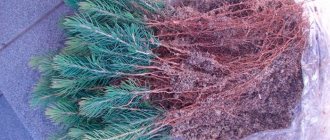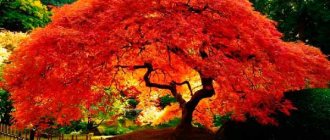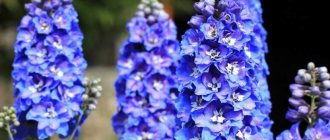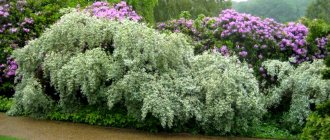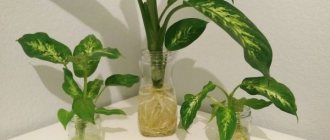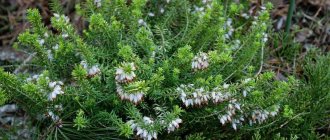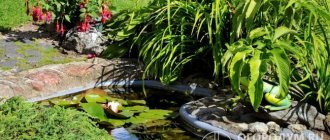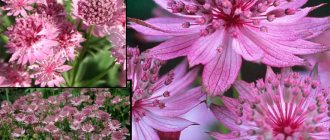What is good about spruce in the country? She:
- Disinfects and aromatizes the air, saturates it with oxygen. Conifers are record holders for the release of phytoncides (volatile substances that destroy bacteria and fungi). You will be provided with a pleasant aroma and fresh air in the area.
- Creates a pleasant shadow. Conifers do an excellent job of this task - they usually have a dense crown and wide branches.
- It just looks beautiful. Spruce will be a bright accent if it grows alone. And from several Christmas trees you can make a hedge (but do not plant the trees too close to each other, the distance between them should be at least 4 m). A live spruce decorated for the New Year will be an excellent backdrop for holiday photos.
Let's talk about how to grow a spruce on a plot, how difficult it is and how long it will take. We will also tell you which variety to choose.
Selection of planting material
Spruce trees have long been used not only for landscaping. They have many beneficial properties, which become even more active in winter. Essential oils, medicines and cosmetics are made from pine needles. There are many varieties of coniferous trees. The most common types of Christmas trees are the common one, the Canadian one, and the Acron type.
When the choice has fallen on a certain type of tree, you need to think about where to get the planting material. The easiest way is to buy from a nursery. This method is most popular if the variety is rare and exotic or if it is not possible to get it in the forest.
Purchase from a nursery
Buying seeds and seedlings from a nursery does not require much time and is most suitable when only a few specimens are needed to complement the design. Seedlings are sold in special pots. At the root of the cuttings there should be a lump of native soil. This will help the young tree adapt to its new environment.
Did you know? The needles are used to prepare vitamin complexes for people and animals.
The seedling must meet the following characteristics:
- The needles are healthy in appearance, without severe shedding or plaque.
- Fresh shoots at the tips of the branches.
- The plant is straight, without deformations.
- With slight bending, the branches bend but do not break.
- A pot that is too small may indicate an injured root system.
Growing from seeds
If time expenditure is not important for a gardener, you can try growing planting material at home or in the country on your own. For this method, species that are found in local forests are more suitable. It is better to take cones for seeds that are formed from the beginning of autumn until frost.
You will be interested to know how to grow a spruce from cone seeds.
Before planting the seeds, they are kept in a weak solution of potassium permanganate for about an hour, and then in clean water for a day. Afterwards, it is better to sow the seeds in pots with wet sand and store them in a cold room. When planting seeds in open ground, you need to take care of reliable protection. This is ensured by a frame made of rods and fabric. At the end of summer, the structure is removed, replacing it with a layer of dry leaves.
To ensure plant growth, you need to follow a few simple rules:
- keep the soil moist;
- feed with fertilizers (manure, superphosphate or saltpeter) 3 times during the summer.
Find out also how long a spruce tree lives.
From cuttings
For propagation of many types of ornamental trees, twigs, that is, cuttings, are used. Cuttings cut in the spring can be accepted after a short period of time. You can take spruce cuttings in August or even in winter. To cut a future cutting, cut the side branches with scissors or pruners, preserving the so-called “heel” - part of the wood from last year. The needles need to be carefully removed a couple of centimeters from the “heel”.
To grow spruce from cuttings, the material used is sphagnum. It must be kept in warm water prematurely. Sphagnum moss should be spread in an even layer on the film. The branches are laid out at approximately the same distance from each other on the film, which is then rolled into a loose roll. Store future plants in the same roll until planting time.
Digging up a seedling in the forest
When going into the forest to pick up a seedling in order to replant it, it is important to remember a few rules:
- You need to dig up the plant in autumn or spring, when the ground is saturated with moisture.
- Do not disturb the native ball of earth at the root.
- You need to choose a tree no taller than 1 meter. The higher it is, the more difficult it will be for it to take root.
- The plant is dug out carefully, first digging it in a circle. The depth should be half a meter or more so as not to affect the root system. In order for the tree to better adapt to a new place, it is recommended to take a bucket of “native” soil with you from the forest.
Important! Right
dig up a seedling not in a dense forest, but on the outskirts, where it develops better and does not compete with other plants.
Spruce in landscape design
To get started, we suggest you watch the video - perhaps you will find answers to your questions in it:
Let's start with the fact that all kinds of spruce are an excellent material for creating the style of a suburban area, which is why when choosing planting material you should pay attention to coniferous varieties.
Thanks to the thick, beautiful crown, the shape of which can be adjusted depending on the purpose, high and low spruce trees are successfully used to create compositions such as:
- rockeries;
- hedges;
- topiary;
- single and group plantings.
The combination of low coniferous plants with neatly formed crowns, stone and decor made from natural materials is suitable for decorating an area in both a regular and natural style, which is why rockeries with spruce as a key element are very popular.
How to properly arrange group and solitary plantings of ornamental conifers in the garden:
Rockeries are also good because they require small investments with maximum aesthetic effect: almost all plants can be grown with your own hands, and stones can be found right on the territory of the dacha, brought from the river bank or from a quarry
A living spruce hedge is an excellent fencing element that can be planted along the perimeter or between two different functional areas. Tall, densely planted trees will completely replace the fence, and miniature ornamental plants will decorate the area and create a natural atmosphere.
Other plants are also suitable for hedges. More details here: https://diz-cafe.com/ozelenenie/rasteniya-dlya-zhivoj-izgorodi.html
In this case, low, but planted trees close to each other have a decorative rather than a functional purpose - they separate the rockery area from the rest of the territory
Having a small Christmas tree at your dacha, you can practice the art of topiary - create a geometric figure, spiral or other simple three-dimensional object from a lush spruce crown. This is where one of the properties of coniferous plants comes in handy - slow growth (3-5 cm per year).
It is better to start understanding the basics of topiary with the least complex shapes - a cube, pyramid or ball, and then move on to more complex configurations, for example, spirals
Against the background of brick and wooden buildings and fences, groups of sparsely planted fir trees of varying heights look beautiful, and a single tall fir tree can become the center of a recreation area or an excellent background partner for a gazebo (benches, garden decor).
Many people specially plant a spruce to celebrate New Year and Christmas in nature. A holiday spent in the fresh air is more interesting and fun than a banal family feast, and the process of decorating a tree with garlands and toys is a real magical ritual that children will remember for a lifetime
Preparing the landing site
The stages of planting seedlings and forest planting material are identical. They are best received in new places in spring and late autumn.
A place to plant a Christmas tree must be chosen not only based on aesthetic views, but it must be taken into account that spruce trees love the sun. Young trees are afraid of heat, so the best place would be an area shaded by a fence or other low trees. It is necessary to provide drainage; spruce trees grow noticeably worse in damp areas. The ideal place for them would be an area with fertile soil and low groundwater levels.
We recommend that you learn about the best varieties of spruce trees for landscape design.
Popular types of fir trees
There are more than 45 species of spruce in the world. To find out which one is suitable for your site, you need to understand the characteristics of the varieties. Let's talk about the most popular ones.
Norway spruce or European spruce
Tall type of fir trees. With proper care, the tree reaches 30 m in height, the crown can be 5 m in diameter. But on average, these are eight-meter trees.
The dwarf variety of the species is in demand among buyers. Trees grow up to 1 m and are used as hedges.
Popular varieties: Elegansu, Nana, Inversu, Columnaris, Tompa, Compact.
Blue or prickly spruce
A common type of spruce is used to improve the surrounding area. The tree can often be seen near administrative buildings.
The plant grows 25-30 m in height, has a pyramid shape, long prickly needles (2-3cm). The needles are bluish in color and become greener with age.
Staged planting
Planting spruce can be broken down into steps:
- Dig a hole 60 cm deep and the same diameter.
- Build drainage from sand along with crushed stone at the bottom of the hole
- Prepare a soil mixture from the following components: sand, soil, peat and humus, you can add up to 150 g of nitroammophoska.
- Cover the drainage with the mixture and pour in a bucket of water.
- Plant the root together with a lump of earth in the hole.
- Fill the rest of the hole with the mixture.
- To ensure that the plant maintains one optimal temperature, mulch with peat.
Procedure - how to transplant a spruce tree?
When planting spruce, the cloth with which the earthen ball was wrapped can not be removed, but simply untied so that it covers the bottom of the hole and additionally retains moisture at the roots. Leave the fabric at the planting site only if natural material was used that can quickly decompose and turn into humus.
The young tree is installed so that the designated south side of the trunk is directed south. Left empty after placing the seedling on the bottom, the volume of the planting hole is filled with previously prepared soil taken from the forest. A circle is created around the plant, with a diameter slightly larger than the size of the crown, which is generously watered with water at room temperature. After the soil has settled a little, the missing amount of soil must be added, and the tree trunk area should be mulched with sawdust or dry leaves.
Aftercare
In addition to watering and feeding, the young plant requires compliance with the light regime. During the initial stages of growth, the tree needs to be provided with coolness and shade. It is important that the root system tends to develop in breadth and not in depth, so the roots can damage fences and fences, sometimes even the foundations of buildings. In winter, spruce must be protected from the cold and cared for. To do this, gardeners often use a device made of twigs and cotton fabric. It is removed in the spring.
Did you know? Typically, the lifespan of spruce is 200–300 years, but there are specimens with an age of up to 600 years.
Watering and fertilizing
The soil around the spruce should always be slightly moist, but not too saturated with water. The watering time can be set by squeezing in your hand a handful of soil taken from the root. If the lump breaks up, you need to start watering. It is especially important to monitor watering in hot weather. In summer it is carried out twice a week, pouring in 10 liters of clean water each time.
The first years of life the tree requires additional feeding. Fertilization is carried out using peat, sawdust or manure. A mixture can be made from these components. It is distributed 10 centimeters above the soil.
Trimming and shaping
Spruce, like pine, grows slowly, but periodically requires pruning. For prevention, gardeners do it once a year. It consists of removing dry and diseased branches and thinning them so that the rays of the sun can fully reach the tree.
Find out in more detail what is the difference between spruce and fir tree.
Shaping is most often carried out in the spring, before the first shoots have yet appeared on the branches, or at the end of summer, when the tree is preparing for winter and slows down its growth. It is important to choose the time for pruning and shaping so that the wounds on the plant have time to heal before frost. Young trees are usually grafted and pinched.
Preparing for winter
Spruce seedlings are not resistant to frost for the first couple of years. In order for a tree to survive the winter safely, it needs to be well insulated. In addition, there are other ways to prepare a coniferous tree for winter. The first is to water the plant abundantly before the frost itself. In winter, the tree does not stop growing, but simply slows down its vital processes.
In the spring, the seedling will not need additional watering because it will use the existing water supply. Another way is mulching. It is carried out using sawdust, which creates a dense layer, but at the same time leaves access to oxygen.
Spruce in the garden - advantages and disadvantages
Many people wonder whether or not it is worth planting a spruce on their site. We should immediately mention the disadvantages:
- Spruce is a fairly spreading tree; it creates a large shade that other crops may not like.
- The root system of a coniferous plant is located in the upper layers of the earth, from where the spruce gets its nutrients, nothing will grow under it.
- Due to the characteristics of the root system, you should not plant tall spruce trees in a region with frequent, strong, gusty winds. It may fall and damage nearby buildings.
But there are also advantages to planting this coniferous tree:
- The spruce will decorate the site with its appearance all year round. On New Year's holidays, you can simply dress up a living beauty without cutting it down.
- This plant can aromatize the air, its smell will drive away ticks.
- Spruce releases phytoncides, which in due course purify the air.
- The Christmas tree does not require much care, it is unpretentious, and can grow where other trees would not like it. It can be planted on the north side of the house.
- There is no need to clear the area of spruce needles; they rarely fall and rot immediately.
Interesting! Green fir cones make delicious jam.
Basic recommendations for feeding
It is very important to avoid fertilizers that contain large amounts of nitrogen, since all coniferous plants do not tolerate an excess of this substance. Although nitrogen-containing fertilizers stimulate growth, it can be dangerous. Thus, the intensive growth of immature shoots leads to the fact that they are not ready for the winter cold and die. After wintering, your spruce trees will greet you in the area with yellowed needles. The growth points die off in cold weather, and the tree becomes infected with chlorosis.
It is for this reason that it is necessary to exclude nitrogen-containing fertilizers when planting seedlings, as well as when mulching. If you want your spruce to grow, it is better to use compost. 3-5 kilograms of this fertilizer are enough for 1 square meter. Vermicompost is no less effective. You can purchase this fertilizer at specialized garden stores.
Photosynthesis of spruce trees is less than that of deciduous trees and shrubs. In order for photosynthesis to proceed successfully, the tree needs magnesium. For liming conifers, it is recommended to use dolomite flour, which contains magnesium. But this fertilizer is not enough. It is necessary to fertilize with other compounds that contain easily digestible magnesium.
Microelements are very important for the normal development of spruce trees. If a tree lacks at least one element, it develops poorly, the shoots are immature, and chlorosis may also occur.
Growing seedlings from forest Christmas tree seeds
Propagating Christmas trees by seeds is a very labor-intensive and time-consuming process. It is necessary to prepare seeds from ripened but not yet opened cones of a healthy adult tree. To do this, the cones need to be thoroughly dried, and after they open, collect the fresh seeds that spill out of them.
Preparation of planting material necessarily includes seed stratification, that is, cold treatment. The best option would be to place them in a container with dry river sand and put them in the refrigerator for a month. You can add a little peat.
After 4 weeks, place the container in a warm, well-lit place in the apartment and water it abundantly before the first shoots sprout. The most successful time for germination is February - March - the period of increasing daylight hours after the winter season.
As soon as the sprouts sprout, watering must be done more carefully so as not to break them with a stream of water and not to flood the roots. When the plants reach a height of 5-7 centimeters, they are carefully, together with a small lump of earth, transplanted into flower pots. At home, Christmas trees will grow for about a year, and only next spring they can be safely planted in the ground under a film to protect them from burns.
Watering rules
Spruce in a summer cottage should be watered very well: the first time when planting, then regularly 1-2 times a week. Watering is carried out at the root until the soil stops absorbing moisture. After each moistening, it is recommended to loosen or mulch the soil around the tree trunks. Do not use sprinklers or sprinklers; their action can provoke the shedding of needles even in an adult, long-rooted plant. In the winter-spring period, watering is not necessary for the planted spruce; natural precipitation is sufficient for its growth. The first sign of a living seedling is the appearance of new growth. For example, the annual growth of blue spruce is 10-30 cm.
The best survival rate of the plant will be determined by its shading in the summer, which can be organized using the most basic gauze canopy.
Reproduction of spruce
A variety of methods can be used to propagate spruce. Thus, for species-specific spruce trees, seeds are used; selection species are grown from cuttings with grafting. But the most popular method of propagation is branches. They can be cut in spring (late April), summer (mid-June or late August) and autumn (november). Picture 8. Tree propagation.
Branches from young trees, between 4 and 8 years old, take root best. It is necessary to cut them at the top of the crown, since such cuttings take root best. The optimal length of cuttings is from 10 to 25 centimeters.
How to properly care for a spruce
Common diseases
If frequent thaws occur in the winter season, they can lead to the development of fungal diseases on spruce trees. If you notice that the needles have become darker or have begun to die, this means that the tree is infected with a fungus. This disease can cause branches to die.
To minimize the possibility of fungus appearing on a tree, when purchasing seedlings, it is better to give preference to varieties that are highly resistant to disease. If the tree disease cannot be avoided, then fungicide treatment can be used for treatment.
Soil for conifers and its composition, what kind of soil the plants need - we prepare the right substrate.
But if the root part is wrapped in polyethylene or burlap, then it is better to remove the shell so that the process of rotting does not begin in the soil. The soil around the trunk needs to be compacted a little so that there are no voids in the soil around the roots, and a little watering will be enough to lightly moisten the soil. Small seedlings can be covered with covering material, a cut bottle or film, as they will take root faster in such an improvised greenhouse. It will be possible to remove the film within a week, but the “greenhouse” needs to be ventilated daily.
When the spruce has been planted in the ground, and the spruce has taken root a little, the question of caring for the plants arises. Fertilizers added to the soil during planting will last for several years, so trees usually do not require fertilizing. It is much more important to water the tree correctly in the first few years of its life, since the growth rate of seedlings depends on the amount of moisture in the soil. It is recommended to fertilize only decorative dwarf varieties that are artificially bred and therefore weaker and less adapted to poor soils.
Every week, a grown plant needs about 15 liters of water.
It is not worth pouring out such an amount of moisture at once, so as not to wash away the soil; it is much better to divide the amount of water into two waterings.
Spruce responds positively to sprinkling, so if there is a drought and the tree has withered, it is recommended to water it with a hose with a sprinkler, and the plant will turn green again.
It is recommended to water a small annual spruce daily so that the soil remains slightly moist at all times.
The soil around the seedlings must be loosened regularly, since the roots of the tree need air flow. The soil will caking less and retain moisture longer if the soil around the trunk is mulched with mown grass or sawdust.
Like many other plants, spruce needs to be pruned and its green mass formed.
The plant reacts very positively to this procedure: after removing excess branches, the spruce begins to grow especially actively.
Experienced gardeners recommend forming the crown annually. In addition, spruce is often used for landscape design, in which a shape is cut out of a fluffy Christmas tree. Pruning spruce trees is also used to form a hedge: due to the trimmed top, the plant grows in width, its side branches lengthen and create a natural fence.
